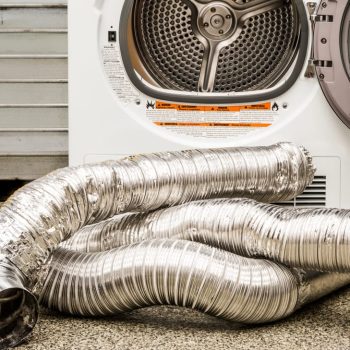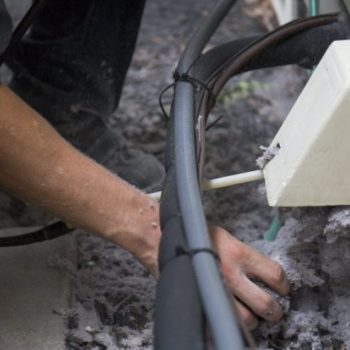
Condensation in dryer vent cleaning
- Posted by admin
- On April 13, 2023
- 0 Comments
- dryer vent cleaning, dryer vent cleaning ottawa, high dryer vent cleaning
Condensation in dryer vent can exhaust vents and cause problems if not properly addressed. Some key things to know about condensation in dryer vents:

• Moist heat from the dryer is vented outside through the dryer vent. As the hot, humid air moves through the vent, it can condense on the inside surfaces of the ductwork, especially when passing over or through uninsulated areas like attics or crawl spaces.
• Condensation in vents leads to excess moisture. The water vapor that condenses eventually accumulates as liquid water that drips down inside the vent. This excess moisture can damage the vent, reduce airflow, and in severe cases lead to water damage elsewhere.
• Built-up moisture allows lint to stick, clogging the vent. Lint is lighter when dry but sticks together when wet. Condensation causes lint to clump together in the vent, creating clogs that block airflow and increase fire risks.
• Reduced airflow from clogs worsens efficiency and drying times. A clogged vent cannot remove heat and moisture from the dryer effectively, causing the dryer to run longer cycles to dry clothes fully. This wastes energy and money while increasing wear on the dryer motor.
• Condensation leads to musty smells. The moisture collected from condensation promotes the growth of mildew and mold inside dryer vents, causing a musty smell that can also enter the dryer and even the living areas of the home.
• Moisture damage inside the vent can be costly to repair. In severe cases, the excess water from condensation can cause the vent material itself to deteriorate or leak, requiring replacement of entire sections of the vent. It’s best to prevent excess condensation buildup when possible.
Some tips for controlling condensation in dryer vents include:
• Use a properly sized vent and keep the run as short as possible. A longer, smaller vent has more surface area for condensation to form and cannot remove heat/moisture effectively.
• Insulate the entire vent run including in uninsulated areas. Insulation helps prevent heat loss and condensation, especially at joints and bends. Uninsulated parts like attic vents tend to see the most condensation.
• Consider a vent booster or secondary dryer fan. These help keep air moving at a efficient flow rate so more heat and moisture can be removed before condensing.
• Clean the lint screen before each use and clean vents regularly. A clogged lint screen and built-up lint in vents reduce airflow and promote high condensation. Regular vent cleaning helps prevent issues.
• Consider a vent condenser or hose. These attachments remove excess heat from the exhaust to help prevent condensation before air enters the vent. They can be useful for long vent runs or uninsulated areas.
• Diagnose and fix any airflow restrictions or blockages. Anything blocking or constricting the airflow like crushed or dented vents will decrease efficiency and increase condensation. Repair or replace any damaged components.
• Address excess indoor humidity, if needed. While venting controls moisture, the dryer still produces humid air. Reducing overall indoor humidity levels can help limit how much condensation forms.
Controlling condensation in dryer vents helps prevent problems, reduce costs, ensure safety and maximize equipment performance and lifespan. Proper maintenance, humidity management and addressing any issues found are effective ways to limit excess condensation and its damaging effects.



0 Comments